Confession #8: Three Hots
And the pictures are a thousand words
In another life, I had 3 teenagers— and they were all three-sport season athletes.
It is tempting to reminisce about this one precious time in our family’s life— the drama-filled highs and lows of competition; the pride of seeing my children overcome obstacles within themselves and as part of a team.
But I will stop there.
You know what else I vividly recall about that time?
Our grocery bill.
During that season, we could have financed a fully furnished second home— on the water— with the money we spent feeding our kids. I would buy six gallons of milk a week and still run out. I shopped sales and clipped coupons and went without other things to nourish the ravenous people in my charge.
…Can we just take a brief moment of silence, please, for the moms and dads doing this now under the current state of inflation? Yikes.
Whenever I hear someone reference the “three hots and a cot” assumption of prison life, I brand them ignorant. Sorry-not-sorry.
In my recent exposé about the weight of guilt, I mentioned food. In truth, the most conflicting aspect of my everyday life is now mealtime.
After my son was arrested, I broke down most dramatically, and most often, in my kitchen. I still have a hard time making his favorite meals. I gingerly approach holiday tables knowing, inevitably, I will hide from everyone else to cry privately because I cannot pass him a plate.
This month, it will be no less a struggle than any other March 17th of recent years. This is, historically, a day that my oldest would eat me out of not one, but two, prepared corned beef briskets, pounds of potatoes, and Irish soda bread. Even when he no longer lived at home, he made the drive to my house as a pilgrimage.
Instead of welcoming him home, I now get to imagine him in a cell with a faded melamine tray of whatever soggy, pressed, processed, reheated “food product” they are serving up that day.
Sláinte, my boy.
For the record, American prisoners are not required to get three “hots”— in fact, there are no national standardized guidelines for how and when our incarcerated population eats. Depending on the facility, county, state, and region wherein you are picked up and imprisoned, it will vary. The variance, however, does not rise much above “keep them alive” rations.
Fun fact: Our DOC stipulates that hot food only be offered twice daily. As such, individuals in confinement get two “warmed” meals per day. The third is cold. Of course, two warm meals are only the rule when emergencies or other factors (i.e., Covid, staffing shortages) prevent maintenance of food-safe temperatures. In that instance, our loved ones get three-colds; two pieces of bread and a dollop of cold mystery “meat” or baloney for every meal. See an example below.1
‘Three hots and a cot’ is a misnomer, so— we can stop saying it.
Nutritional guidelines for the average 5’9”, 200 lb. American male set daily caloric intake needs at 2,800 (cals) per day. That is considered enough to maintain adequate mental and physical energy, assuming he's moderately active.
The average caloric intake of an American prisoner is, on paper, ‘consistent’ with the "Dietary Guidelines for Americans" formulated by the U.S. Department of Health and Human Services and the Department of Agriculture.
Spoiler Alert: Paper formulations and system operations are not the same.
If you are interested, you can use the USDA online calculator to estimate how many calories you need per day in order to “prevent chronic diseases and promote health.” Dieticians will tell you that caloric and nutrient intake are much more nuanced, taking health status and other factors into consideration (e.g., stress levels, sleep quality, life stage), but for our purposes let’s use the “official” government figures.
I put my son’s stats into their little boxes and the recommendation was that he, assuming a low-active range of activity, requires over 3,100 calories per day.
In reality, he estimates that he gets somewhere closer to 1600-1800 cals a day.
The evidence?
He has lost 40 lbs. since he was incarcerated.
“Well, your ‘baby boy’ is a PRiSoNeR so—”
Regardless of gross societal distain and our collective disregard of “prisoners” as a class of people deserving zero consideration, I am a mother. I have grown four people from their microscopic origins and watched each of them take in oxygen on planet Earth for the first time. Every hair on their heads, cell in their bodies, and every functioning piece of them came from the depletion of my own calcium, magnesium, iron, and folate stores. I then fed and nurtured their growth for a combined 61 years— not including 36 months of pregnancy.
Come at me, bro.
Full disclosure: my degree is in health psychology.
This is a specialized field of psychology that studies how biological, social, and psychological factors influence health and illness. We do therapy, but we take it a step further—
Health psychs look at the physical manifestations of stress, we look at physical precursors to addiction and anxiety and ADHD— we discuss everything from impotence to immunity to illness before we create therapeutic treatment plans which aid our clients to improve their sleep, diet, and movement.
Perhaps this is why my son’s inability to access vital nutrients, for years on end, has me perched upon a particular edge of fury.
In psych 101, we all learned about Maslow and his hierarchy of needs theory. Used in nearly every facet of human endeavoring since the 1950’s including child development, education, personal development, career planning, coaching, healthcare, and business— this theory describes five distinct levels of innate human need that motivate people to evolve and achieve their highest potential. Here’s a quick refresher:
At the base of our existence is a need for physiological stability. Food, air, water, sleep, and relative health are non-negotiables for human success. If these base components of our lives are unfulfilled, we become more consumed with attaining them— to the loss of all other personal evolution. In short, we get stuck in survival mode.
Human beings cannot move into higher ordered thinking, attain greater social skill, nor achieve personal growth if we are struggling at physiological Ground Zero. There will be no learning nor improvement in morality or socialization when we are near starving, can’t breathe, are freezing or sick or we are living under constant threat in a physically unstable or unhealthy environment.
This is old science. This is basic, undisputed psychology. It's one of the reasons that public schools are now providing free meals to all students. If we are hangry, our pre-frontal cortex becomes impaired— problem-solving and adaptability sharply decline. Impulsivity goes up; self-control goes down.
There is much to be said about the absolute folly of supporting our antiquated corrections models (based on human deprivation) as “rehabilitative.” I’ll write more on this in future posts where there is space but, for today, it is enough to say that simply improving prison food would move the needle toward improving self-correction and the social aims of any prison sentence.
Bad food leads to bad moods. Poor diets lead to illness and chronic dis-ease. Insufficient food causes unrest, stealing, in-fighting, and in many cases— riots.
Our Tax Money
For those uninformed souls who blather on about how “lucky” these criminal degenerates are to get tax-payer funded food— The food budget makes up about 3% of the annual cost of my son's incarceration. For perspective, you and I spend an average of 12.9% of our annual budget on food.
Currently, each meal that my son eats is budgeted to cost under $2.20. He subsists on less than $7 of food per day. 2
Here's a comparison of the other costs relative to my son's taxpayer burden:
Correction officer salaries constitute about 40% of the annual $48,000 bill
10-20% goes to administration (more salaries), building maintenance, and general operations (more salaries)
Another 10-15% goes into prisoner healthcare (you know, to address the high blood-pressure and diabetes promoted by their excellent food options and yes, more salaries)
Roughly 5-10% goes to training programs and education
Another 5-10% pays for legal costs for prisoners (i.e., lawsuits, etc.)
Transportation and other ‘miscellaneous’ costs us 5-10% (i.e., moving between facilities, court hearing appearances, etc.). Most hearings are now done remotely via Zoom, however.
So, if you are tracking— at the very bottom of the D.O.C. budget we find the smallest line-item of funding for one of the MOST impactful influences on true rehabilitation.
Outsourcing
Like most states, ours has played with cost cutting in various ways. In 2013, our politicians swore that we would save money by outsourcing prison food service. The contracts were put out for bid and we hired out-of-state corporations to come in to run things.
Shocker: It went poorly.
Even state prison employees became so disgusted with the situation that they risked their jobs to become whistleblowers— taking now exposed pictures of spoiled and expired foods, unsanitary kitchen practices, and food shortages.
A corrections officer was fired in 2017 for refusing to serve over 100 pounds of moldy potatoes to the inmates under his watch.
That same year, the MCO (a unionized corrections organization) provided evidence that, among other disgusting kitchen realities, maggots were found on food bound for prisoner consumption. Another time, a for-profit food manager was fired after instructing workers to “cut off” the parts of mouse-nibbled corn cakes and serve them to the unsuspecting population— the firing only happened after the cakes were consumed.
Have you seen what a mouse does when it eats?
After a decade of lawsuits and documented food atrocities in this for-profit model, both Florida-based Trinity Food Services and their predecessor Pennsylvania-based food vendor Aramark were released from their food service contracts in Michigan.
Their offerings were so bad that these firings took place under a pro-business Republican governor.
The state then opted to discontinue all private food service contracts and reinstated state-run food service operations in 2019, hiring over 350 people back to work for the D.O.C. in a food service role.
For the fiscal year 2025, our D.O.C. has allotted $76,098,200 for prison kitchen operations.
This figure comes out to only 3.42% of the FY 2025-2026 state corrections budget. [Check it out]
To balance need with costs, the state follows what is called the Statewide Standard Menu. If you would like to view the one in our state (since you are paying for it)— too bad. D.O.C. “recipes” are considered ‘internal documents.’ They are not publicly available. If you dig, however, you can find a standardized menu from other states. This is the menu this weekend in your NY prisons, albeit on paper:
At first glance, meh.
At a closer glance, how sad.
Any “beverage” is code for a powdered drink made entirely of sugar and food dye mixed with tap water.
The numerous “meatless” options are comprised of reconstituted TVP (textured soy protein)— made by adding water to processed, dehydrated soy flour.
The only staple fat content is margarine (i.e., bad cholesterol raising corn, soybeans, and palm oils).
Note the exceedingly high sugar content of every meal— this is, of course, how they meet daily caloric requirements.
Also note— no eggs. Not even powered egg product.
There is zero protein at breakfast.
For nine planned meals, there is only one “petite” piece of fresh fruit offered.
Behold the pasta with “meat” dishes—
My son, Lord willing, is one of the 95% of U.S. inmates who will be coming home.
Last year, over 700,000 humans walked out of a state prison and re-entered our communities. The vast majority of them returned with chronic medical conditions that were initiated or exacerbated by a pervasive lack of access to proper nutrition while serving their punishment to the society— the society that will now, thank you very much, foot the bill for their heart attacks, strokes, liver failure, cancers, and dental problems.
Making prisoners sick is FAR more expensive than feeding them decent food.
I will die on this hill.
In our stubborn-independent-American-do-the-crime-do-the-time refusal to look at how prisoner’s are treated, we steal money from our own families. We are, and will continue to increasingly pay out of our own pockets for the unsustainable health system burdens created by our current incarceration model.
There are 2 million people in American jails and prisons. Feeding them food and beverage with viable nutrients is one of the most effective ways to stop increasing the numbers of Medicaid-draining cases.
Please also note—
Prisoner medical transport during illness is tax-payer funded.
Prisoner medications that stabilize blood sugar and blood pressure is tax-payer funded.
Prisoner mental health degradation, behavioral outbursts, and prison riots due to food quality and availability is a tax-payer cost.
Parolee mental and physical disability after release becomes a tax-payer burden.
What Do You Expect?
Change.
This year, American moms have become increasingly more vocal re: their outrage over modern corporate “food” practices and ingredients. Protesters in yoga pants wheeling strollers gathered en mass on the Kellogg’s headquarters front lawn last fall to demand changes be made to their profit-driven adherence to food production. IYKYK. We're talking about an industry making millions by shoving artificial food dyes and high fructose corn syrup down our American gullets for decades.
I support their concerns— and I am also out here shouting for the health of my son. According to recent studies, for every year he spends in prison, two years come off of his life expectancy.
If we are going to make American communities healthier (and safer)— we have to stop expecting that prisoners will magically rehabilitate, re-entering our cities and towns bright-eyed and ready to go after years of eating nothing more than what most of us would dump in the garbage.
I am not suggesting that we offer NY strip within prison walls.
I am, in fact, suggesting that we shift the burden and aid our incarcerated population to plan, budget, and work for their own food.
In the Open Prison models of Norway and Finland, incarcerated men and women budget and shop within a prison-run grocery store, cook their own food, and then dine together around an actual dining table. Finnish prisoners are allowed to fish and forage and grow their own food in raised garden beds. In Denmark, they can even opt to budget for and bake a cake for a family member’s birthday visit (learning this made me cry).
Even in the “closed-prison” models within Nordic countries, catering managers employ their incarcerated population to prepare and cook fresh meals (as opposed to reheating pre-packaged slop). Prisoners are offered the opportunity to complete a four-year culinary diploma while working in the kitchens in order to prepare them for sustainable careers post-incarceration. There is also an in-house nutritionist on-site with whom they interact and who guides healthy meal creation— as required by Danish law. 3
These types of practices not only require responsibility, budgeting, and food awareness, this allows people to flex the autonomy that we say we expect of paroled individuals. This model keeps prisoners from being passive consumers, teaching them self-sufficiency and tangible life skills.
In contrast, Americans continue to be made into docile end-users in prison.
Scandinavian examples of prison food quality are also night and day from what our population is choking down: real meatballs, fish (they catch), fresh vegetables, wild mushrooms (they forage), and for a twist on the weekends: homemade pizza in brick ovens they constructed or BBQ over a firepit that they built. No, I'm not kidding.
What's even crazier is that the daily allotment for their food is roughly €8.35 per day— that is only $1.15 more than what is allotted my son for his daily re-warmed mash.
In our own country, Mountain View Correctional Facility in Maine has piloted an inspiring farming and local food program that has made the news this past year.
They are the subject of a 2024 documentary called Seeds of Change: Breaking Free from the Prison Food Machine that details how the inmates are growing and eating their own food. You can also listen to a great podcast featuring Mark McBrine, the Food Service Manager for the Maine Department of Correction here. He offers an inspiring firsthand account of a unique shift in U.S. corrections thinking.
I cannot cheer loudly enough.
Healthier eating in prison is not only possible, my friends, it is cheaper for us taxpayers (listen to the podcast for more details).
Two summers ago, I took notice when our own D.O.C. began posting social media photos featuring inmates holding up freshly harvested vegetables from local prison gardens. I even gave them a blue thumbs-up.
I asked my son if he could work in the gardens. He said the list is too long to be considered. I asked him if they were able to eat the fruits of their labors. His response was again, no—
In fact, if a D.O.C. garden worker is caught eating any of the food they grew or harvested, they are ticketed, sanctioned, and fired from that job. The D.O.C. also confirmed online that their prison-raised-produce is not to be kept by the facility but is, instead, ‘donated’ to local charities.
Riddle Me This…
Our state publicly boasted over the 100,000 pounds of fresh food grown by inmates last year.
Our state has decried funding and food crises within our prison system for decades.
State and prison leadership is donating hundreds of thousands of pounds of fresh food away from the prison where it was grown.
(Answer: U.S. prisons are a for-profit business)
The truth is that gardens do not honor the signed contractual agreements (nay, profit expectations) with corporate vendors. Gardens do not ‘comply’ with current D.O.C. policies and regulations regarding food procurement. Gardens could be seen by the public as “reward” for criminal behavior (clearly those people haven't done real garden work).
So— our leadership got out there to snap a few marketing ops for Facebook. Oh, look how rehabilitative they are at the D.O.C. with all of the “giving back” to the community! Pfft.
How about you just give my son back without heart disease and high blood pressure.
All of the pictures in this post were obtained through investigations; some through the use of contraband cell phones by prisoners and staff in various facilities across the country. Please review the sources at The Marshall Project and The Frontier.
We shall discuss commissary later.
Yes, we have “registered dieticians” in our DOCs but they exist, mostly, to recommend diet options to chronically ill individuals who require medically-indicated options. This is different than overseeing high nutrient and protein content for every prisoner.



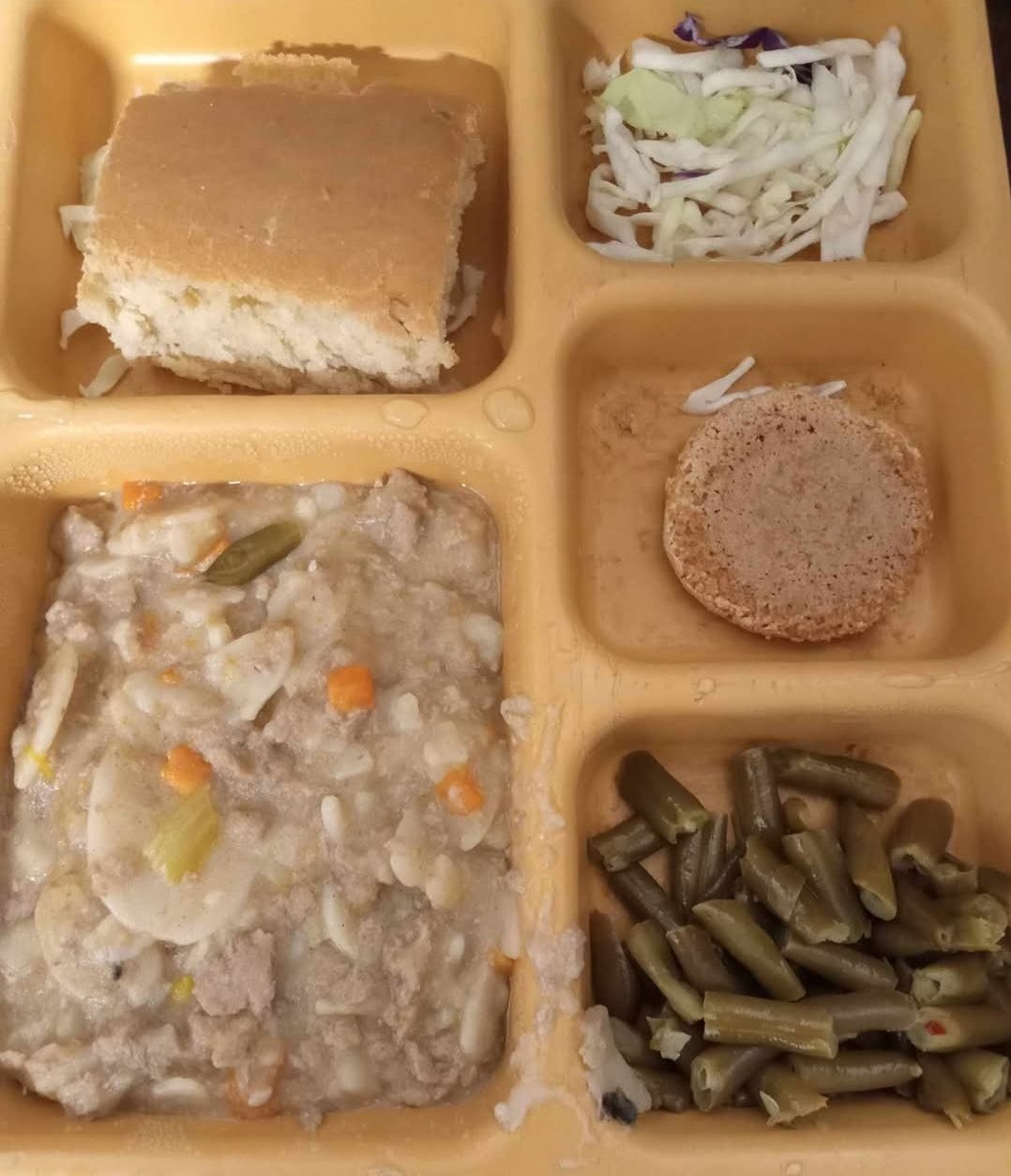
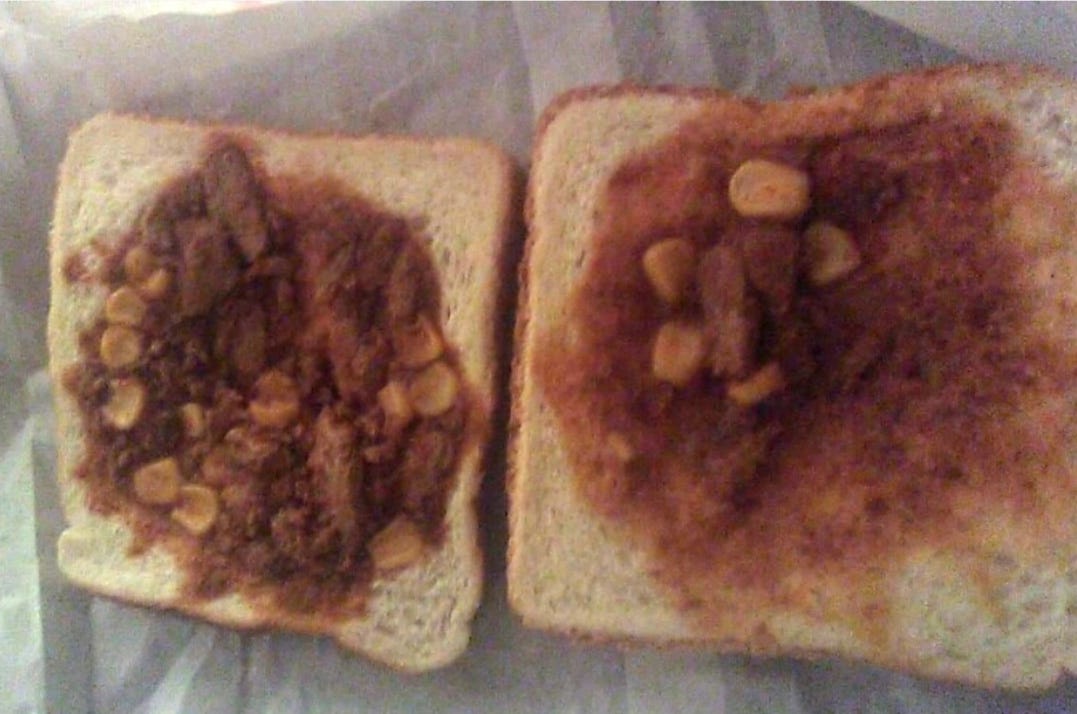
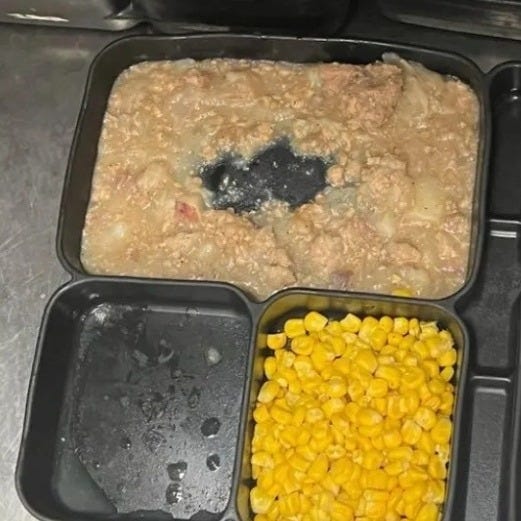


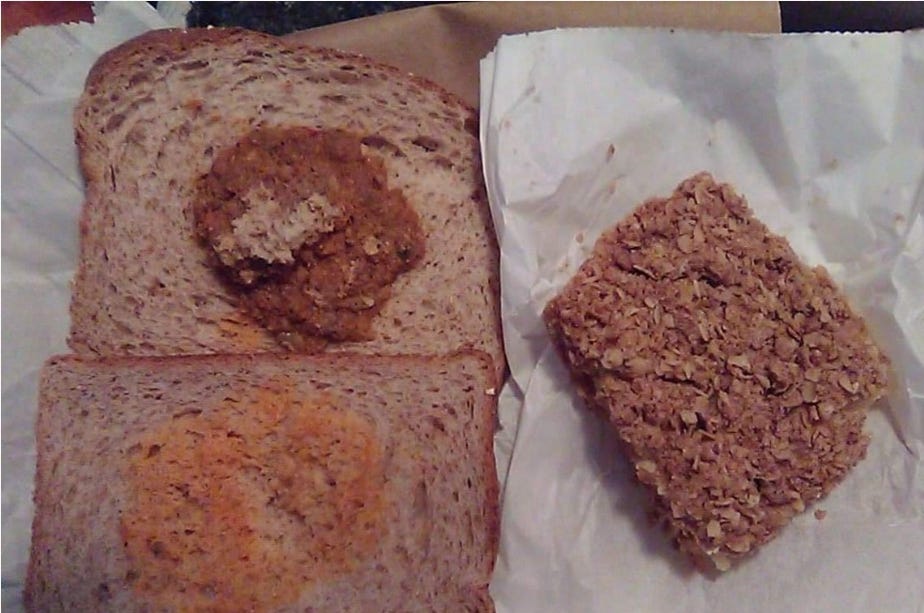

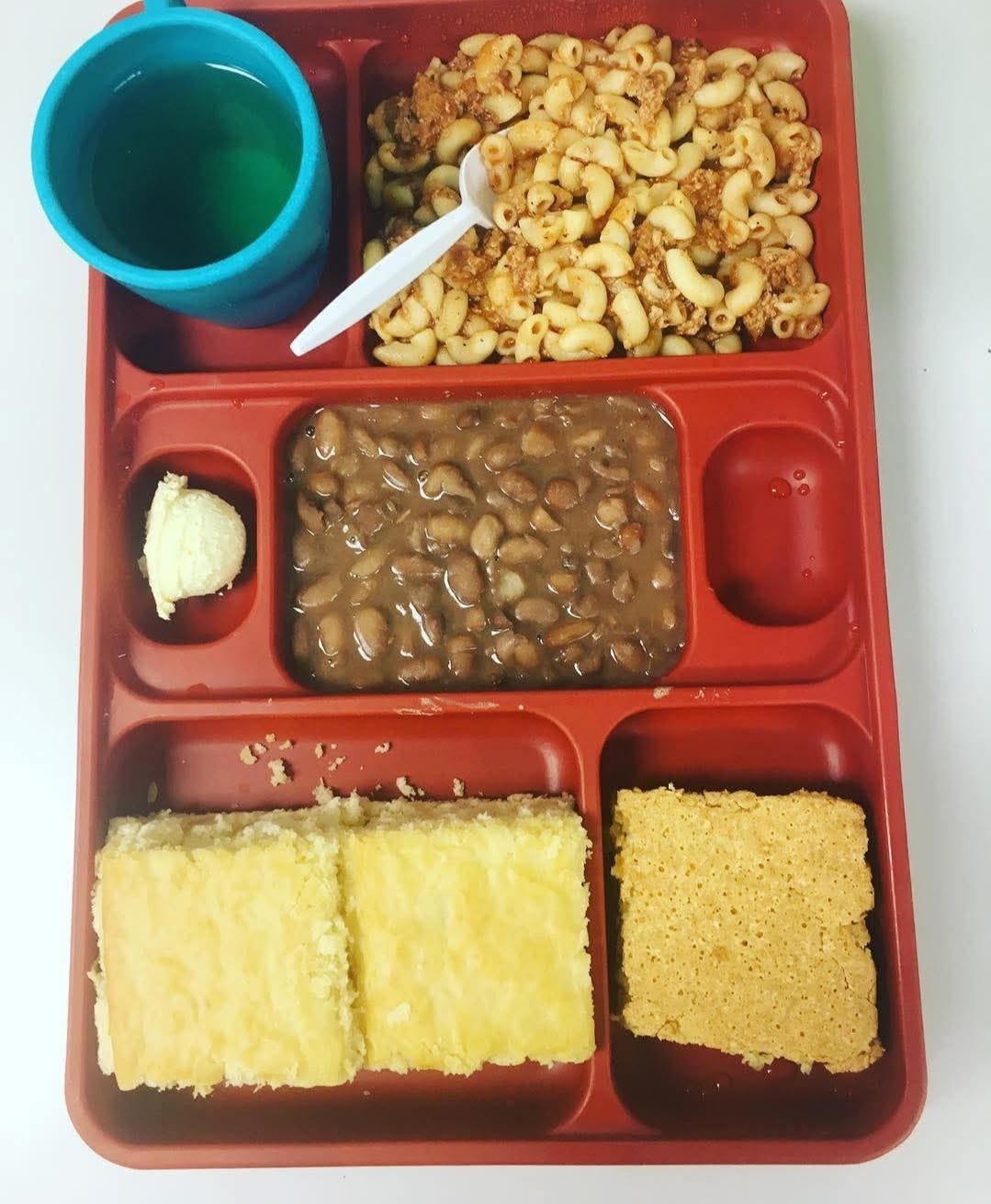
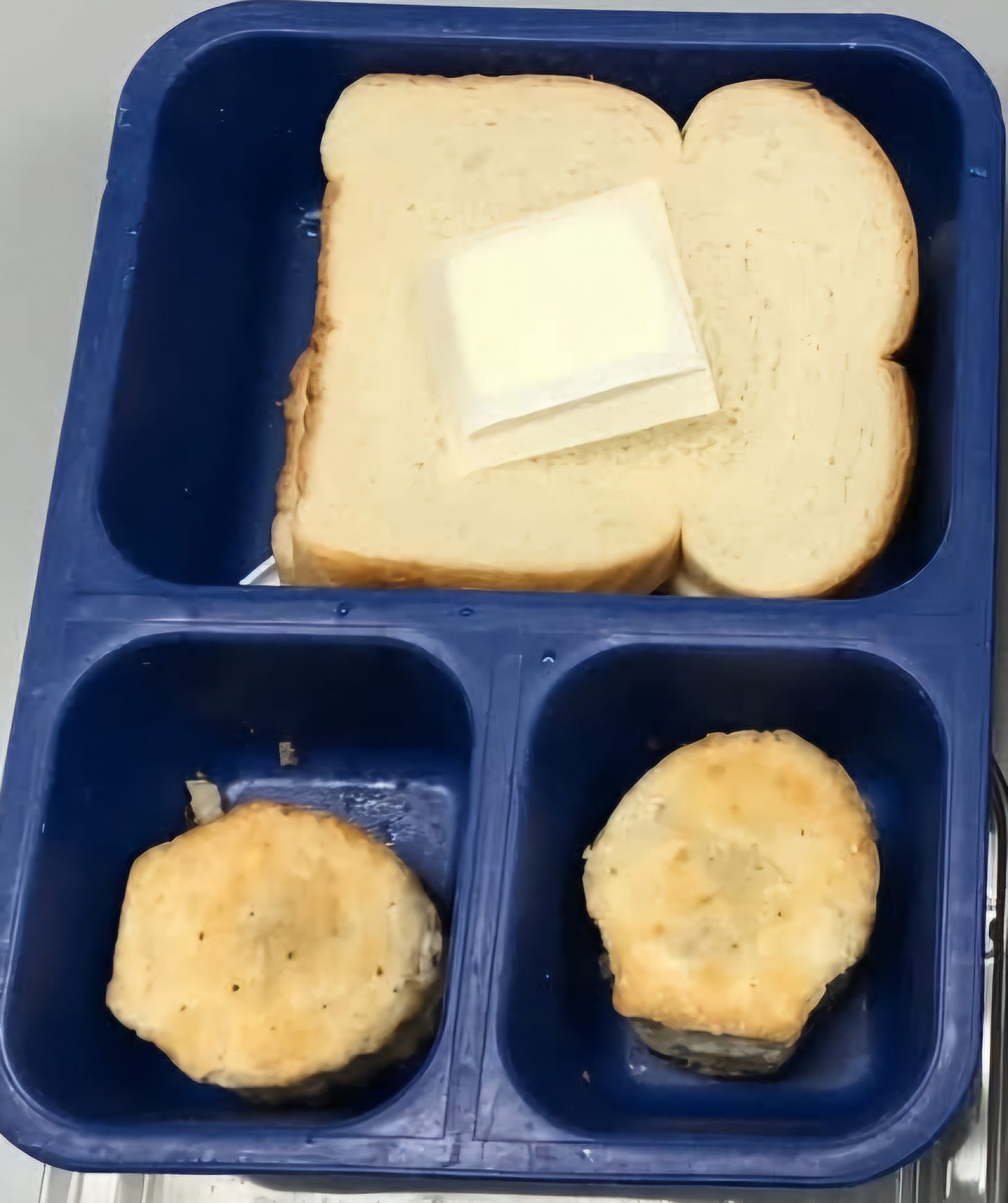

It's a global situation. I hope and pray that your voice pierces those administrative deaf years, and your son comes back soon without any diseases.
I can believe this. I’ll check out what’s going on in GA.